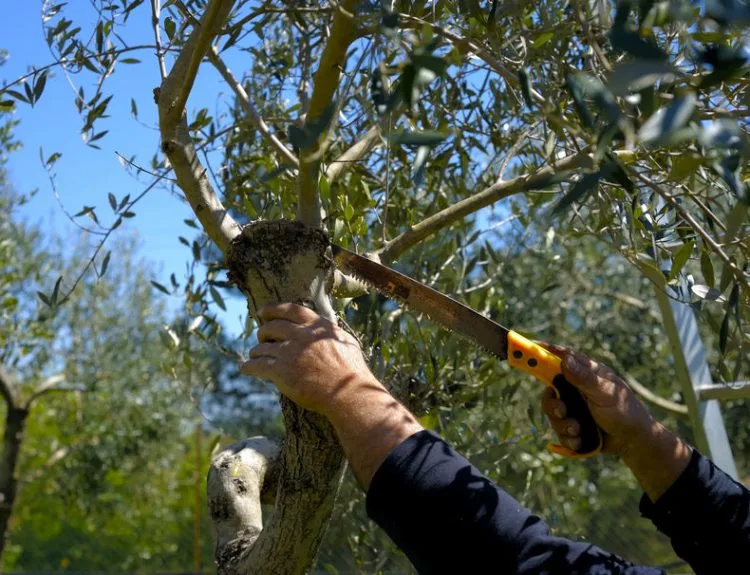Despite the cold temperatures and shorter days, winter can still be a time of activity in your garden. February is a good time to trim, prune, and maintain plants and trees. These tasks are a great way to ensure a vibrant spring garden.
Work and maintenance during dormant periods is part of the upkeep process in any lawn and garden. Think of the time you put into your lawn during the winter as “preparatory work” to optimize the new growth when spring arrives.
PRUNING

Pruning is necessary to help plants grow strong and healthy during their growing season. It helps them retain their natural shape and allows for air and light to circulate through the plant so it will develop full foliage later on.
February is ideal because it is before the new growth starts, yet past most of the severe cold of the winter.
TOOLS
Be prepared for the task of winter pruning by keeping your garden tools in good shape. They should be sharp and clean to create a smooth cut.
Oiling your tool blades after heavy use will help prevent rusting and extend their life.
Sharper tools are easier to work with, and create a cleaner cut on the plants and trees that will heal more quickly. A clean cut leaves the plants less vulnerable to disease. If your tools are rusty, you’re putting your plants at risk by cutting with them.
GENERAL CLEANUP
When pruning, always remove weakened, broken, or diseased branches. This practice allows the plant to fortify healthy branches without impeding their growth.
RELATED TIP: How to Remove a Large Shrub
Additionally, it is a good practice to remove or trim back limbs that are crossing or rubbing. This way, the plant’s limbs are not in a competition with each other for optimal sunlight.
PLANTS THAT NEED WINTER PRUNING
Crepe myrtles are an example of a shrub that should be pruned in February. Plants that bloom in summer often flower on new growth. This means it is important to clean up the plant and remove old seed heads from the previous year.
Fruit trees and bushes, such as berries or fig trees, should also be pruned at this time. Moderate annual pruning will help promote consistent fruit production during their growing season.
Roses are a flowering shrub that benefits from late winter pruning. Hybrid teas and shrub roses should be pruned to around 12”-18,” making cuts on a slant about ¼” above a good bud. This will help ensure maximum growth and bloom potential.
Liriope, like monkey grass, should have all old growth removed and trimmed down to the ground to be ready for spring.
Summer blooming hydrangea can be cut back to the main stem to encourage branching. To encourage new growth and larger blooms, cut to within a few inches from the ground.
Evergreens are another class of plants that can be pruned in February. Shrubs- like holly and boxwood, as well as needled evergreens- like junipers and yews, can be shaped in winter. Just be sure not to cut back into old wood.
If wisteria is trimmed by pruning shoots down to three to five buds, this will encourage better blooming next season.
RELATED TIP: How to Winter-Proof Your Landscape
Ornamental grasses that are overwintered should be cut back before the next season’s growth begins. They should generally be trimmed to a few inches above the ground.
ADDITIONAL ADVANTAGES
Pruning in winter is advantageous for a few reasons:
It is easier to see the structure and shape of plants and trees in winter.
Plants are dormant so there is no danger of new growth that can easily be killed in colder weather.
There is also less bulk to clear and it is easier to spot broken or damaged limbs and to spot disease.
Pruning helps maintain shape, improve appearance, or reduce the size of the plants and trees in your garden.
Pruning will help keep your plants, trees, and grasses healthy, thereby lengthening their lifespans.
Final Thoughts
Properly timing the procedure is crucial for successful trimming and pruning. Make sure to research what each plant needs and when.
These tasks can be overwhelming, so reaching out to professionals at Evergreen Lawn & Landscape to prune your lawn and garden for you may help alleviate some of the stress and guesswork for you.



Comments (0)
Thanks for your comment!
Thanks for your feedback! Your comments have been successfully submitted! Please note, all comments require admin approval prior to display.
Error submitting comment!
There is a problem with your comment, please see below and try again.